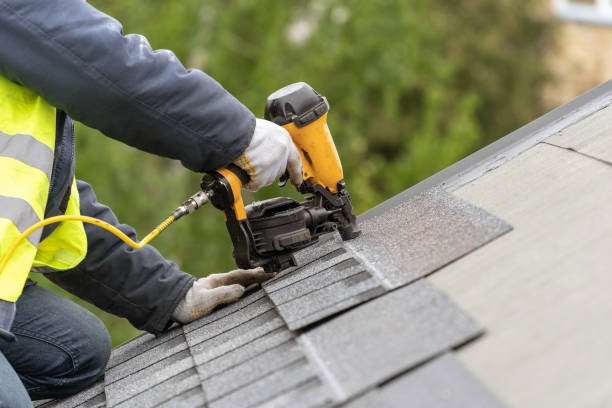Metal Roof Replacement vs Shingles: The Ultimate Homeowner’s Guide
When it comes to replacing your roof, few decisions matter more than choosing the right material. Among the most common options are asphalt shingles and metal roofing — each with its pros, cons, and costs. Many homeowners lean toward asphalt shingles due to affordability and familiarity, but others are turning to metal roof replacement for its longevity and energy efficiency. Not sure where to start? You can check out guides that explain the structure and benefits of traditional shingle roofing to get a clearer understanding before diving in.
Understanding the differences can help you make an informed decision that aligns with your goals, budget, and lifestyle.
What Metal Roof Replacement Really Means
A full metal roof replacement involves removing the current roof—usually asphalt or wood shingles—and installing a new system built from steel, aluminum, copper, or zinc. Unlike metal overlays, this is a complete rebuild that includes new underlayment, fasteners, flashing, and ventilation. The result is a high-performance system designed to last for decades.
Why More Homeowners Are Choosing Metal Over Shingles
The lifespan of a metal roof can range from 40 to 70 years, while asphalt shingles usually last only 15 to 25 years. This extended durability alone makes metal roofing appealing to those who want a one-time investment that will outlast their stay in the home. Moreover, metal roofs are more resistant to harsh weather, including wind, hail, snow, and fire. In areas prone to natural disasters, they offer extra protection and peace of mind that shingles simply can’t match.
Energy Efficiency and Environmental Impact
Metal roofs reflect solar heat instead of absorbing it like asphalt, helping reduce indoor temperatures during hot months. This can cut down on air conditioning costs by up to 25%, depending on insulation and local climate. In addition, metal roofing materials are often made from recycled content and are fully recyclable at the end of their lifespan, unlike shingles which usually go to the landfill. This makes metal an eco-conscious choice for homeowners who prioritize sustainability.
Cost Comparison Over Time
Yes, the upfront cost of metal roof replacement is higher. Installation typically costs two to three times more than shingles. However, because metal roofs last much longer and require fewer repairs, the overall lifetime cost is often lower. Homeowners avoid the need for second or third replacements, and maintenance costs are minimal. Metal roofing can also improve resale value and reduce insurance premiums, making it a financially sound choice in the long run.
How Installation Works
Installing a metal roof involves a multi-step process that starts with removing the existing roofing material and repairing the deck if needed. Contractors then add moisture-resistant underlayment before fastening the metal panels or shingles into place using clips or screws designed to handle thermal movement. Proper sealing and flashing are critical to prevent leaks, especially around chimneys and skylights. Though installation may take slightly longer than shingles, a professional crew can typically finish within a week.
Common Misconceptions About Metal Roofs
Some people avoid metal roofing due to outdated myths. One common concern is noise during rain, but this issue is virtually eliminated when the roof is installed with quality underlayment and attic insulation. Others believe metal attracts lightning, but it doesn’t increase the risk—in fact, metal safely conducts electricity and disperses energy without igniting. Rust is also rarely an issue today, as most metal roofs have durable coatings that protect against corrosion for decades.
When Metal Roof Replacement Makes the Most Sense
If you’re planning to stay in your home for 20 years or more, a metal roof makes excellent financial sense. It’s also ideal for homes in storm-prone, wildfire-prone, or hot climates, where resilience and energy performance are critical. Environmentally conscious homeowners will also appreciate the sustainability aspect, and for rental or investment properties, metal roofing reduces ongoing maintenance and keeps tenants secure and satisfied.
Final Thoughts
Choosing between asphalt shingles and metal roof replacement depends on your budget, goals, and how long you plan to stay in your home. While shingles are more affordable up front, they come with higher long-term costs and more frequent replacements. Metal roofs, though more expensive initially, offer decades of protection, better energy performance, and long-term peace of mind. For many modern homeowners, that’s an investment worth making.
Frequently Asked Questions
Q1. How long does a metal roof replacement last compared to shingles?
Metal roofs typically last 40 to 70 years, while asphalt shingles usually need replacing after 15 to 25 years.
Q2. Is metal roofing noisy during rain or hail?
No. Proper insulation and installation techniques make metal roofs just as quiet as shingle roofs.
Q.3. Can a metal roof be installed over existing shingles?
Sometimes, but a full metal roof replacement with removal of old shingles is recommended for best performance and warranty compliance.
Q.4. Does metal roofing attract lightning?
No. Metal safely conducts electrical charges and doesn’t increase the chance of lightning strikes.
Q.5. Is a metal roof more expensive than shingles?
Yes, upfront costs are higher, but metal roofs last much longer and require less maintenance, which often saves money in the long run.


